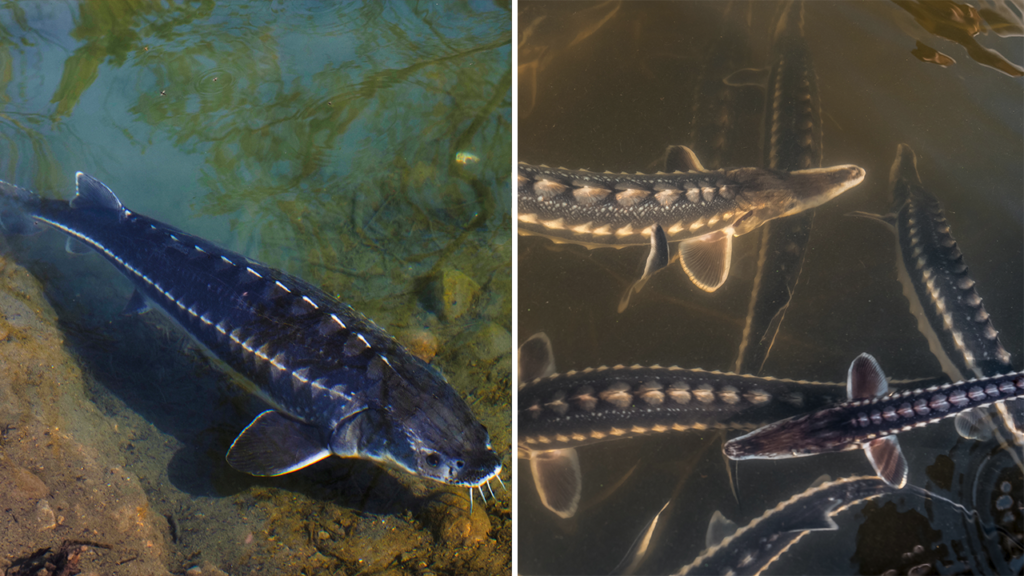Researchers from the Connecticut River Conservancy (CRC) have embarked on a significant investigation into the waters of the Connecticut River, spanning across Massachusetts, Vermont, and New Hampshire. This ongoing study has led to a remarkable discovery: evidence of shortnose sturgeons, an endangered species, has been detected in the river for the first time through the innovative use of environmental DNA (eDNA). This breakthrough was announced in a press release issued by the CRC, which highlights the importance of utilizing advanced scientific methods in addressing conservation issues.
According to James Garner, a PhD candidate at UMass Amherst, the investigation was initiated following reports from local fishermen, referred to as the “fisherfolk community,” who shared their sightings of these prehistoric fish. Garner emphasized that the multiple positive eDNA detections provide the first scientific validation of these local accounts, confirming the presence of shortnose sturgeon in areas upstream of several dams along the river. This finding is more than just an academic curiosity; it underscores the significant role that community knowledge plays in guiding scientific research and environmental conservation efforts.
Shortnose sturgeons are intriguing creatures, often described as having a unique “body armor.” This consists of five rows of external bony plates known as scutes, as defined by the National Oceanic and Atmospheric Administration (NOAA). These fish can grow to weigh up to 50 pounds and can reach lengths of five feet. The ecological importance of shortnose sturgeons cannot be overstated; they are considered “prehistoric” organisms due to their existence dating back to the era of dinosaurs. Their status as an endangered species means they are protected under state laws, with the Massachusetts Department of Fish & Game noting it is illegal to possess them.
Historically, shortnose and Atlantic sturgeon supported a flourishing fishery focused on caviar, smoked meat, and oil during the mid-1800s. However, by the end of that century, over-exploitation had severely diminished their populations. In 1890 alone, more than 7 million pounds of sturgeon were caught, but this figure plummeted to just 23,000 pounds by 1990, illustrating the drastic decline of these fish over a century. The CRC’s press release highlights that several factors, including the presence of numerous dams, habitat degradation, and commercial fishing activities, have had a detrimental impact on shortnose sturgeon populations, mirroring the challenges faced by many native migratory species in the region.
In their quest to study these endangered fish, the CRC collaborated with various organizations and researchers. A notable partnership involved the development of specific eDNA primers and probes by the University of Maine. These tools were essential in this survey, forming part of a broader eDNA toolkit aimed at monitoring diadromous species, which are fish that migrate between fresh and saltwater. Support from NOAA has been instrumental in facilitating this research, emphasizing the collaborative effort required to understand and protect such vulnerable species.
Ultimately, the findings from the CRC’s research serve as a reminder of the interconnectedness of community knowledge and scientific inquiry in environmental conservation. By leveraging local observations and combining them with cutting-edge technology like eDNA analysis, researchers can enhance their understanding of endangered species like the shortnose sturgeon. This comprehensive approach not only helps in identifying the presence of such species in critical habitats but also aids in informing conservation strategies and policies aimed at protecting these ancient fish.
In conclusion, the CRC’s exploration into the Connecticut River showcases the importance of innovation in conservation efforts, reflecting a commitment to preserving biodiversity in the face of historical exploitation and contemporary challenges. As researchers continue to uncover the secrets of the river, the hope is that such endeavors will lead to a more sustainable future for the shortnose sturgeon and other vulnerable species inhabiting this vital ecosystem.



